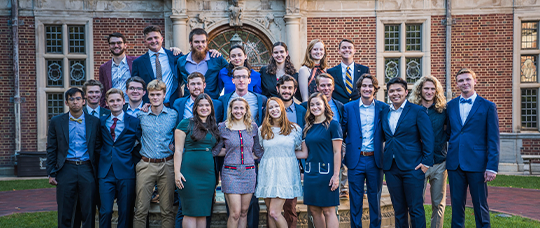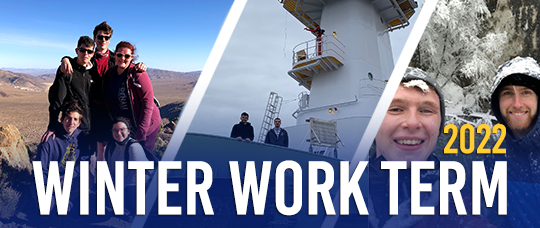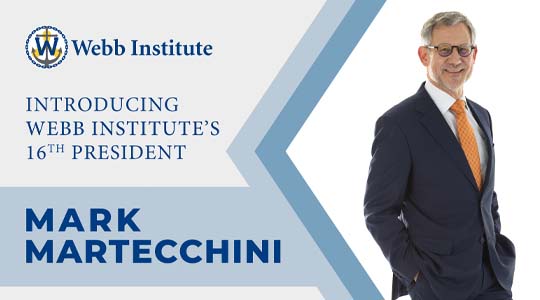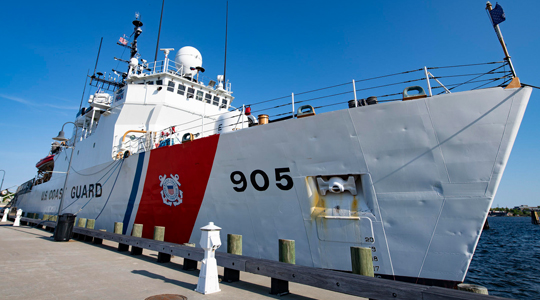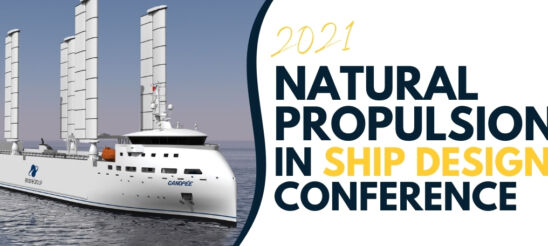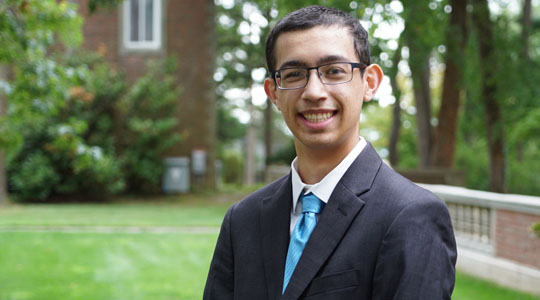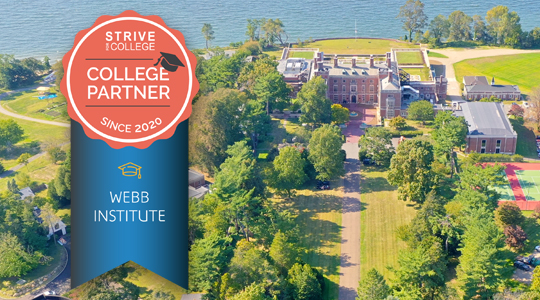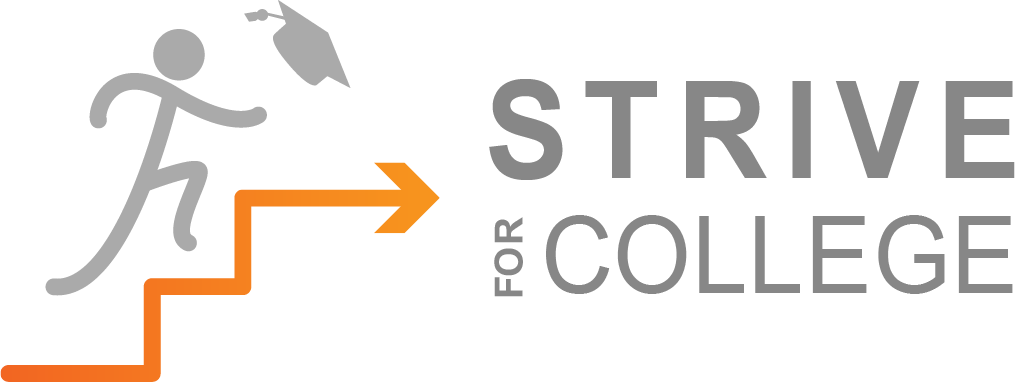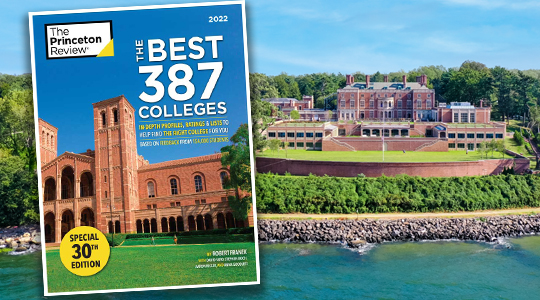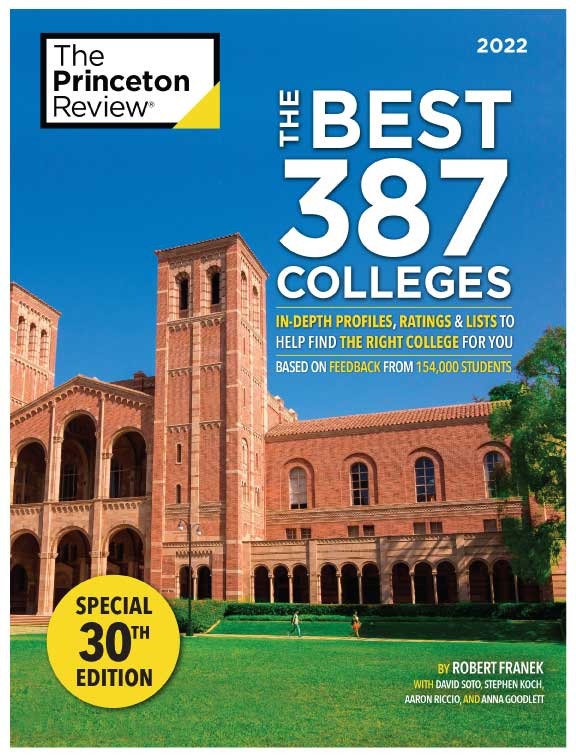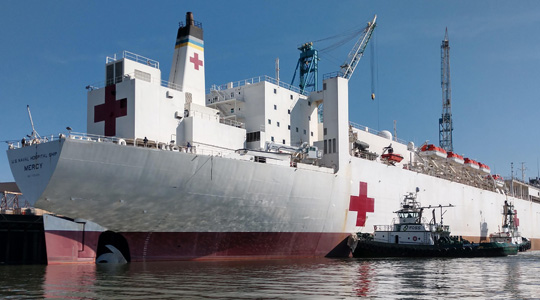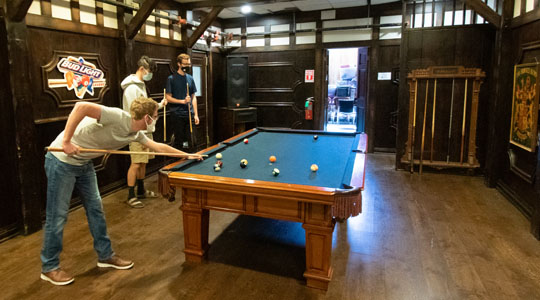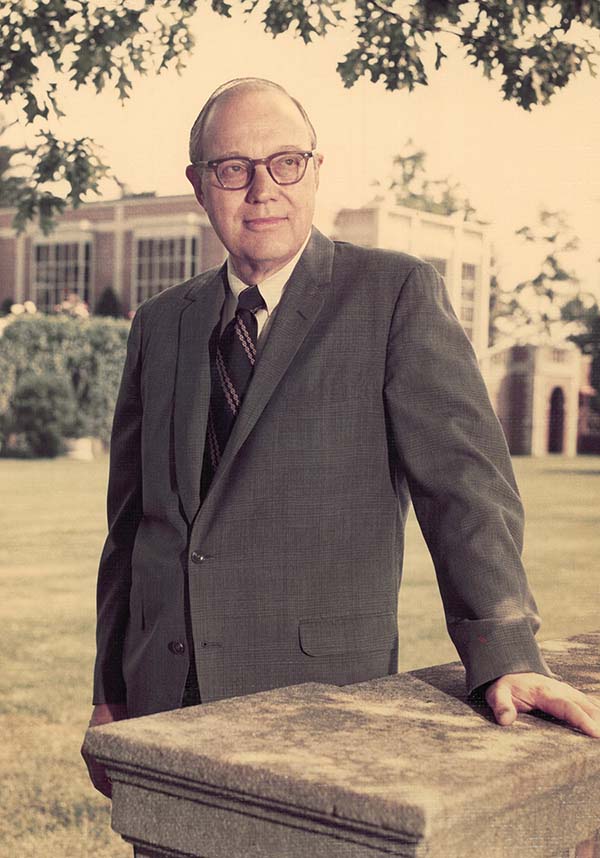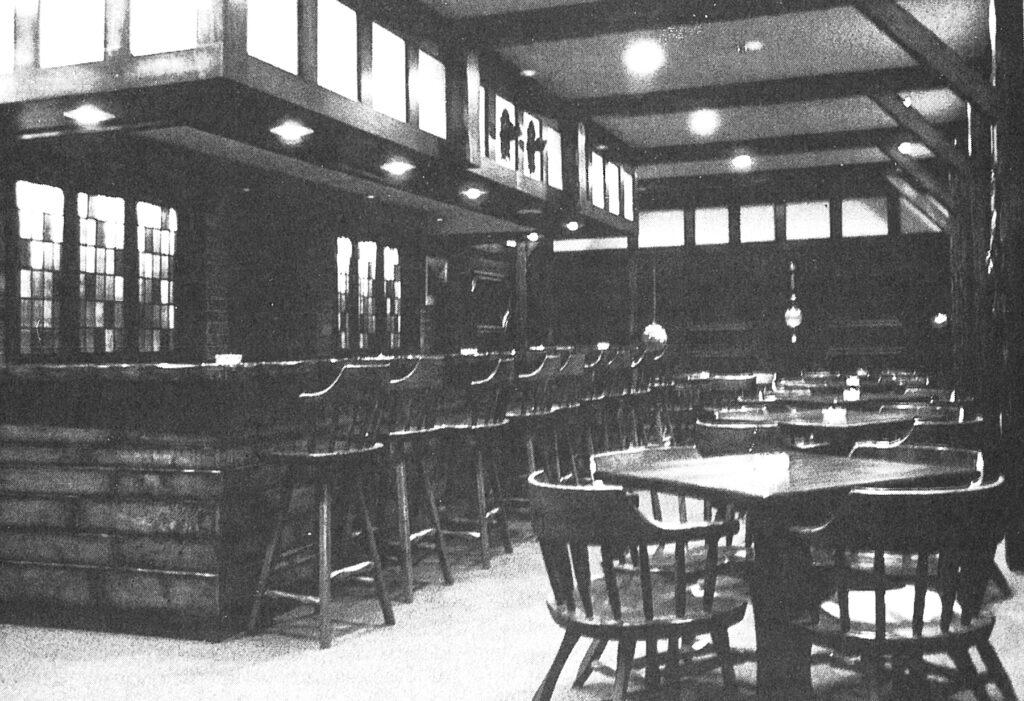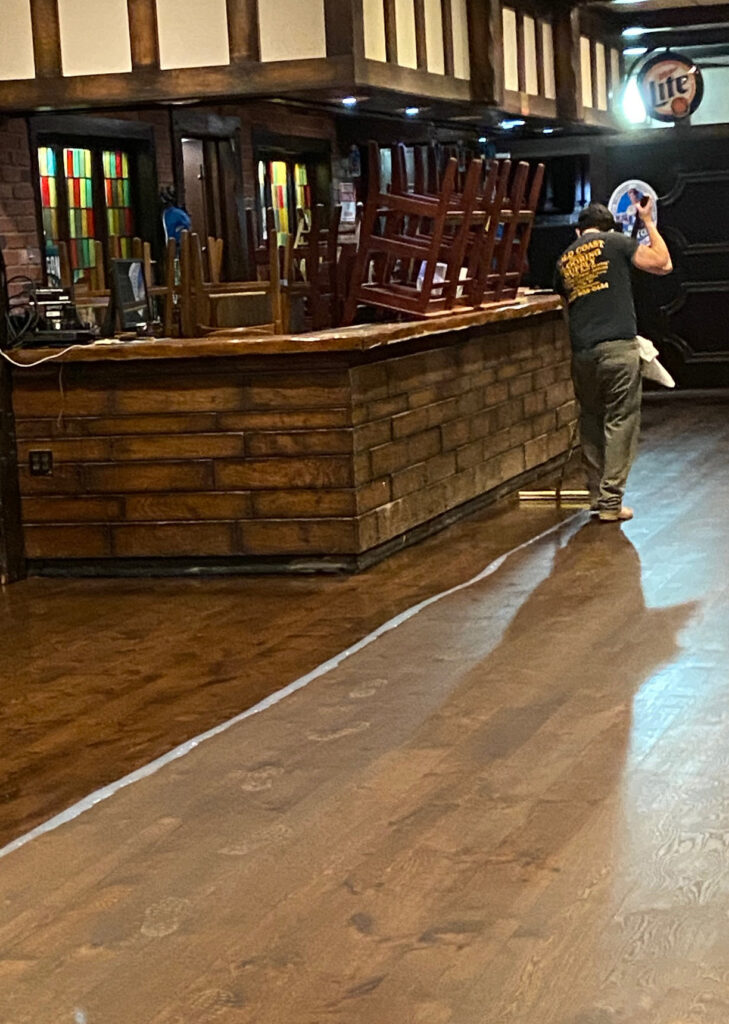In no particular order.
A Feasibility Study and Concept Design of a Modular Battery System for Small Vessels
Anika Breza and Minh Tran
The thesis is divided into two objectives: a feasibility study and a concept design. The aim of the feasibility design is to determine if a ship powered by a battery module is feasible or if the module would be more suitable for hybrid applications. The feasibility study will include research of estimated cost, charging time, and installation processes. The design parameters for the module will be determined from the feasibility study. The concept design will specify the specifications and components of the modular battery system and its integration into an existing vessel.
Wave Response Characteristics of Submerged Floating Tunnels in Varying Conditions
Christopher Hamilton and Jim Rodgers
Submerged Floating Tunnels (SFTs) are an experimental method of crossing bodies of water that avoids construction difficulties due to water depth. This thesis aims to provide data on the physical responses of SFT’s to various wave frequencies. A computational fluid dynamics analysis will be performed, and a physical model will be built and tested in the Robinson Model Basin with the intent of validation the CFD results.
A Computational Fluid Dynamics Analysis of the Unsteady Calm Water Resistance of
Slender Hulls Under Harmonic Surge Excitation
Calder Hartigan
The surge motions of rowing shells pose unique challenges for both experimental and numerical resistance prediction. Potential flow codes appear to be capable of accurately predicting the resistance of slender hull forms experiencing periodic surge motions but have reduced accuracy at higher frequencies representative of real-world rowing conditions (Doctors et al., 2010). The objective of this thesis is to assess the value of the prediction capability of fully viscous CFD codes for the unsteady calm water resistance of a Wigley hull under harmonic surge excitation by replicating the model tests of Doctors et al. (2010), ultimately increasing the published information regarding rowing shell hull design.
A Simplified Test for Recreational Vessel Stability
Toni-Marie Gossage and David Ockers
The objective of this thesis is to create a stability test for recreational vessels over 20 feet in length by comparing the results of an inclining experiment and a sallying test. This thesis expands upon the research of Dan Turoff that was completed in 2015.
Rules Based Design: Automation of a Vessel General Arrangement
Rebecca Teitelbaum
The objective of this thesis is to create a preliminary deckhouse general arrangement based on the MSC Rules for New Construction Large Ships. It will be in the form of a python program. The user will input basic information such as crew, endurance, and principal dimensions. From there, an Excel sheet with required space sizing will be output. Then, a drawing in AutoCAD will be produced as a preliminary arrangement, accounting for the relative location of spaces.
Analysis and Optimization of Power Plant Selection for Harbor Tugboats
Ben Lilly
A number of propulsion plants will be analyzed on an 80′ harbor tugboat, considering their capital cost, operating costs, and emissions as factors in the selection. The emissions are factored into the economic analysis by applying a hypothetical carbon tax based on the social cost of CO2 emissions. Machinery arrangements will then be created for each power plant considered to determine whether each power plant can be installed within the machinery space of the selected tugboat. The results for the tugboat analyzed will then be generalized for all harbor tugboats. The power plants that will be analyzed include diesel mechanical, diesel electric, all electric, and various hybrid and alternate fuel plants.
A Feasibility Study of the Installation and Operation of a
Floating Offshore Windfarm in the United States
Luke Kiely
The objective of this thesis is to compare the levelized cost of energy (LCOE) of a planned fixed-base windfarm to a theoretical floating wind farm in the United States. Multiple sub-structures and energy transportation methods will be explored for the floating windfarm to find the optimized model to compare to the fixed-base windfarm.
Improving the Pathfollowing Capabilities and User Interface of Webb Institute’s ASV
Kevin Becker
Autonomous surface vessels (ASV) have traditionally been expensive, and proprietary. This makes it difficult for schools or research institutions with small budgets to gain access to any maritime robotics tools. This thesis will continue the work of Isaac Kremers (’17), Nicholas Ratinaud (’18), and Max Haland (’21) by assessing and improving the path following capabilities and user interface of the autonomous surface vessel.
An Investigation of the Optimal Design of an Allam-Fetvedt Cycle
Kevin O’Keefe and Gracie Schmitz
With growing environmental concerns around the globe, there has been an increase in the number and intensity of emissions regulations. As a result, new advancements in power generation have focused on reducing emissions while maintaining a high efficiency. One promising advancement is the Allam-Fetvedt Cycle developed by 8Rivers and NETPower. The objective of this thesis is to identify the design and configuration of the Allam-Fetvedit cycle that results in the highest thermal efficiency.
Modeling and Robust Optimization of Slurry Flow using the
Delft Head Loss and Limit Deposit Velocity Model
Christopher Harris
The goal of this thesis is the modeling and robust optimization of variable speed pumps in a slurry system.
Automation of the Creation of Marine Electric One Line Diagram Drawings
Kyle Oliver
The goal of this thesis is to create a program that automates the creation of a One Line Diagram drawing for any marine electrical plant.
Case Study on a Fully Electric Repowering of a Small Craft
Rudy Caligure and Nathan Johnson
The goal of this thesis is to create a fully-electric repowering package for a 50ft workboat owned by the Chesapeake Bay Foundation. This repowering package will include all the required information for the Chesapeake Bay Foundation to carry out this repowering in the future as they hope to transition their fleet to cleaner energy solutions.
Analysis of the Hydrodynamic Performance of a Hydrofoil in an Unsteady Velocity Field
Flora Grilli
The goal of this thesis is to analyze the hydrodynamic performance of a foil advancing in an unsteady velocity field close to the free surface. More specifically, a computational fluid dynamics model is used to simulate a two-dimensional NACA 0012 section at some finite distance below the free surface, while waves are generated at the free surface. The performance of the hydrofoil is analyzed by recording the lift to drag ratio of the foil in various environmental and operating conditions. The model used in this analysis is LilyPad.
Motion Response of a Tension Leg Platform (TLP) in Incident Waves
Ioana Mirica
The goal of this thesis is to determine the hydrodynamic response of a tendon leg platform offshore wind turbine through potential flow analysis. The thesis is completed using DVNGL’s software, HydroD, and integrated potential flow solvers, Wadam and Wasim. Results are validated using a TLP model with results from Juska and Lindyberg (2021).
Reverse Engineering a Vessel’s Hydrostatics to Generate the Hull Geometry
Jonas Armstrong
The objective of this thesis is to generate a three-dimensional computer model of a vessel’s hull using data from the readily-available hydrostatic tables required by regulations.
The Design, Build and Test of an Oscillating Water Column Wave Energy Converter
Sasha Kritsuk and Juliette Lehman
The objective of this thesis is to create a model oscillating water column wave energy converter to drive a turbine to output power.
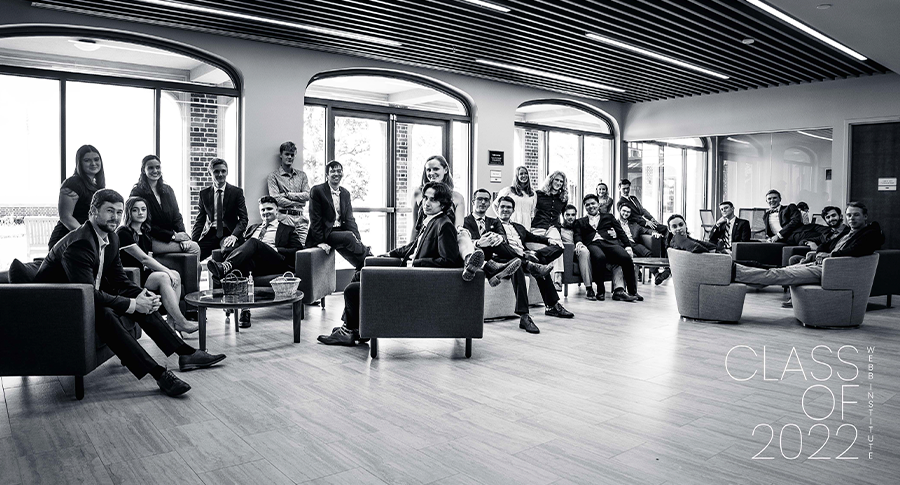
Winter Work Term 2022
During Winter Work term, our students spread out across the globe to gain real-life working experience.
Freshmen work alongside ship fitters and welders in shipyards. Sophomores serve as student observers aboard ocean-going ships to gain hands-on understanding and appreciation for the relationships between the marine environment, the shipping industry, the ship’s operators, and the ship’s design. Juniors and seniors network and apply themselves in design and engineering offices around the world.
Winter Work Map
Student Winter Work Blogs
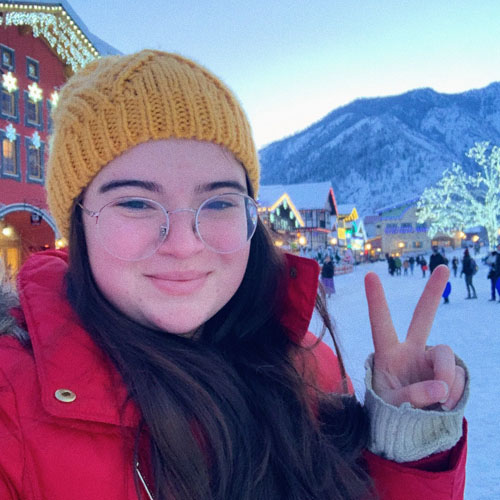
Scouting Seattle
This blog documents Ioana Mirica’s ’22 internship at Delta Marine. Follow her journey and learn a little bit about the naval architecture and marine engineering (NAME) field and discover a few hidden gems in the Seattle area.

Return of the King (County, WA)
Follow seniors, Calder Hartigan, Ben Lilly, Luke Kiely, Juliette Lehman, and Sasha Kritsuk, and first-year students Sydney Barok and Tyler Zylinski as they intern in Seattle this winter! Companies include: Glosten, Snow & Company, Impact Naval Architects, and Hockema Group, Inc.
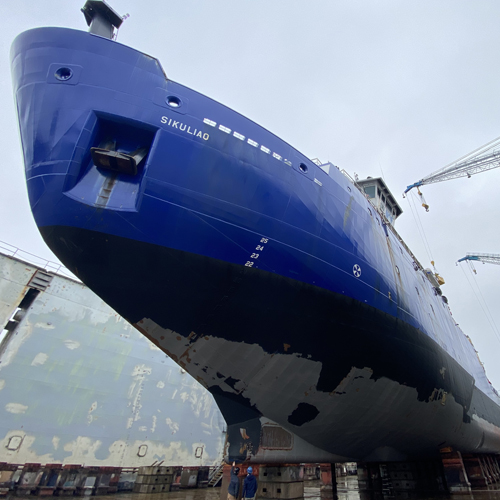
Aboard the R/V Sikuliaq
During Winter Work Term, Miguel Sanchez ’24 will assist marine technicians as they provide maintenance work to the R/V Sikuliaq. He will spend several weeks overhauling the ship in Alaska and then sail to Oregon. Read the blog entries made by Miguel on the Marine Advanced Technology Education (MATE) website.
Winter Work Companies
Class of 2022
| Hydrocomp, Inc. | Durham, NH |
| BAE Systems | Norfolk, VA |
| Boska Marine Design | Lithia, FL |
| CMRE, NATO | La Spieza, Italy |
| Delta Marine Industries, Inc. | Seattle, WA |
| DLBA Naval Architects | Chesapeake, VA |
| GD Bath Iron Works | Bath, ME |
| Glosten | Seattle, WA |
| HII Newport News Shipbuilding | Newport News, VA |
| HII Technical Solutions Division | Virginia Beach, VA |
| Hockema Group, Inc. | Seattle, WA |
| Impact Naval Architects | Seattle, WA |
| Lyman-Morse Boatbuilding, Inc. | Thomaston, ME |
| Murray & Associates, Inc. | Fort Lauderdale, FL |
| Orca3D | Annapolis, MD |
| Snow & Company | Seattle, WA |
| University of Rhode Island | Narragansett, RI |
| Wavecrest Energy | The Woodlands, TX |
| Wyspa Tech | Newport, RI |
Class of 2023
| GD Electric Boat | New London, CT |
| BAE Systems | Norfolk, VA |
| BLOM Maritime, Inc. | Davie, FL |
| BMT Group | Arlington, VA |
| Bruce S. Rosenblatt & Assoc., LLC | Newport News, VA |
| GD Electric Boat | New London, CT |
| GD NASSCO | San Diego, CA |
| Global Foundation for Ocean Exploration | North Kingstown, RI |
| Herbert Engineering | Alameda, CA |
| International Seaways, Inc. | New York, NY |
| Metal Shark Boats | Jeanerette, LA |
| NETSCo | Tampa, FL |
| Northern Marine | Anacortes, WA |
| Polaris New Energy | Jacksonville, FL |
| Shipwright LLC | Fort Lauderdale, FL |
| Stolt Creativity – follow Stolt Creativity | Netherlands/US Gulf |
| ThayerMahan | Groton, CT |
Class of 2024
| NAVSEA | Webb Institute |
| Cape May-Lewes Ferry | Cape May, NJ |
| GD Bath Iron Works | Bath, ME |
| Global Foundation for Ocean Exploration | North Kingstown, RI |
| Metal Shark Boats | Rijeka, Croatia |
| Metal Shark Boats | Jeanerette, LA |
| NAVSEA | Webb Institute |
| NYC Ferry | New York, NY |
| Quantum Marine Stabilizers | Fort Lauderdale, FL |
| R/V Sikuliaq | Shipyard on west coast |
| San Diego Supercomputer Center | San Diego, CA |
| Stolt Confidence – follow Stolt Confidence | Netherlands/US Gulf |
| Stolt Creativity – follow Stolt Creativity | US Gulf/Netherlands |
| Stolt Inspiration – follow Stolt Inspiration | US Gulf/Netherlands |
| Stolt Lotus – follow Stolt Lotus | Netherlands/US Gulf |
| Stolt Sneland – follow Stolt Sneland | US Gulf/Netherlands |
Class of 2025
| Brooklin Boatyard | Brooklin, ME |
| GD Electric Boat | Quonset Pt, RI |
| GD NASSCO | San Diego, CA |
| Gulf Marine Repair | Tampa, FL |
| M. Rybovich & Sons | Palm Beach, FL |
| Marine Group Boatworks | San Diego, CA |
| Metal Shark Boats | Jeanerette, LA |
| Metal Shark Boats | Franklin, LA |
| Metal Shark Boats | Jeanerette, LA |
| Philly Shipyard | Philadelphia, PA |
| Safe Harbor New England Boatworks | Portsmouth, RI |
| Snow & Company | Seattle, WA |
| Westport Yachts | Westport, WA |
Mark Martecchini Named as Next President of Webb Institute
“It is my honor and great pleasure to announce the election of Mark Martecchini as the 16th president of Webb Institute,” said Board of Trustees chair Bruce S. Rosenblatt. “He is a visionary leader who is passionate about the mission of Webb Institute and is committed to building upon our 130-year history of excellence in engineering education.” Effective July 1, 2022, Martecchini will succeed R. Keith Michel who has served as Webb’s president for the past nine years.
The search process was a rigorous one, led by a Board of Trustee’s search committee consisting of seven members with diverse backgrounds and expertise. From a strong international pool of candidates, the search committee invited three finalists to campus for meetings with students, faculty, administrative staff, and trustees. After taking into consideration input from a broad spectrum of the Webb community, the search committee and the Board enthusiastically and unanimously elected Martecchini to lead Webb as its next president.
Martecchini is recognized for his innovative leadership and advocacy for inclusiveness and sustainability. During a 38-year career with Stolt-Nielsen, he served in a variety of technical, commercial and executive roles, most recently as Managing Director of Stolt Tankers, operating the world’s largest global fleet of parcel tankers. Stolt-Nielsen is an international company focused on the bulk liquid and chemical logistics businesses and aquaculture, with more than 6,000 employees across 30 countries.
Martecchini has served on the boards of the International Chamber of Shipping (ICS), the International Association of Independent Tanker Owners (INTERTANKO), and the International Tanker Owners Pollution Federation (ITOPF). He previously chaired Webb Institute’s Academic and Student Affairs Committee, a standing committee of the Board of Trustees.
“I am honored and excited to be chosen to succeed Keith Michel to lead Webb into the future,” said Martecchini, adding, “a future where sustainability and decarbonization will redraw the map of the maritime industry, with Webb graduates ideally placed to make that change happen. Webb has made huge strides under Keith’s tenure, constructing a state-of-the-art academic center that enables Webb to continue adapting its curriculum and faculty to promote innovation and new technologies.”
In his remarks, Board chair Rosenblatt noted the accomplishments of retiring president Keith Michel. “Enrollment, educational outcomes, student body diversity, and the Institute’s financial strength have markedly increased during Michel’s tenure. We thank him for his many contributions.”
President Michel enthusiastically endorsed the selection of Martecchini as his successor. He explained, “I am excited for Mark and his family and look forward to working with him as we transition the presidency. I have long admired his collaborative approach to leadership and believe he is especially well prepared to lead Webb in this time when rapid technological advancement demands innovative approaches to engineering education.”
Martecchini holds a BS in Naval Architecture and Marine Engineering from Webb Institute and an MBA from New York University. He lives in Rotterdam, Netherlands, with his wife Laurie. They have two children, Niko, who is a 2009 graduate of Webb Institute, and Thomas. With the strong family connection to Webb Institute, Martecchini brings a deep appreciation for the mission and values of the college.
NIST Awards 5 Universities With Key Funding to Develop Standards Curricula in Manufacturing, Maritime Design and More
Article from NIST.gov
GAITHERSBURG, Md. — The U.S. Department of Commerce’s National Institute of Standards and Technology (NIST) has made five awards for a total of approximately $373,000 to support standards education in undergraduate and graduate level curricula. Since the program began in 2012, NIST’s Standards Services Curricula Development Cooperative Agreement Program has received 214 applications and made 41 awards totaling over $2.57 million.
“The Standards Services Curricula Development Cooperative Agreement Program and its awardees are building a standards-capable workforce who recognize that the bridge between innovation and manufacturing and the global marketplace is standards,” said Gordon Gillerman, director of NIST’s Standards Coordination Office. “The diversity of the funded programs reflects the diverse areas of our lives that benefit from standards, including manufacturing, medical applications, engineering and marine vehicles.”
Projects awarded under this program support curricula development to integrate content on documentary standards and standardization processes into courses, modules, seminars and learning resources, including sustainable approaches, methods and models that can be replicated and/or built upon by other educational programs into undergraduate and graduate curricula at U.S. colleges and universities.
The latest recipients are:
Case Western Reserve University (Cleveland, Ohio) — $74,237
To develop standards education modules centered on case studies involving quality systems, software development and cybersecurity for medical devices. The content will include lesson plans, tutorials, case studies, videos, homework assignments and a moot court exercise that can be integrated into introductory engineering courses, senior design capstone courses, and the BioDesign curriculum.
Georgia Southern University (Statesboro, Georgia) — $74,971
To create a systematic framework focused on robotics and additive manufacturing standards for engineering students from first-year through graduate that will include lectures, lab projects, industrial internships, case studies, virtual plants tours and webinars with industry experts.
Texas A&M University (Kingsville, Texas) — $74,998
To incorporate standards and standardization into first-year through graduate-level course modules in the Mechanical and Industrial Engineering and Civil and Architectural Engineering Departments. A certificate program on standards for material testing and characterization for polymers and polymer composites will also be created.
University of Arizona (Tucson, Arizona) — $75,000
To develop four e-learning modules with 36 hours of active-learning content focused on additive manufacturing (AM) standards. The modules will cover the use of standards in the design-for-additive-manufacturing process, additive manufacturing process development, and testing and evaluation for additively manufactured parts and will be incorporated into the curriculum of three AM courses in the College of Engineering. The online learning modules will be disseminated to more than 50 institutions of higher education nationwide that offer courses in AM.
Webb Institute (Glen Cove, New York) — $73,836
To create, in collaboration with the United States Coast Guard Academy and the American Bureau of Shipping, a 10-hour course on multiple topics related to marine industry standards, such as standards for the design, construction and operation of commercial and military marine vehicles; why and how standards are developed in the maritime industry; national and international maritime regulations; standards for emerging technologies; and more. The course material can be used for capstone projects and incorporated into undergraduate and graduate curriculum for marine and ocean engineering, naval architecture and engineering, and marine transportation.
Information on future and previous awards can be found on the NIST Standards Coordination Office website, standards.gov.
ANNOUNCING: Natural Propulsion in Ship Design Conference on November 16, 2021
Hosted by: Webb Institute, Marin Institute, and Wind Support NYC
NEW YORK, NEW YORK – A new conference on the use of natural propulsion in the global shipping industry will take place in New York state on November 16, 2021. The conference is being hosted by Webb Institute in Glen Cove, NY, and will be broadcasted live.
The conference will introduce to the audience the design of hybrid merchant ships capable of harnessing free and renewable energies available onboard – wind, solar and hydro – to improve vessel efficiency, independent of the fuel or type of engine used.
The conference could not be more timely. In the United States, 80% of goods are imported aboard oceangoing vessels and maritime vessel emissions account for three percent of worldwide emissions.
As various regulatory bodies and the Paris Accord impose stricter emissions regimes on global shipping, it is important to determine how to meet targets when sustainable green fuels will not be available for another 10-20 years.
Vessel efficiency needs to be improved, carbon intensity (CII) reduced to remain in compliance with upcoming IMO regulations and one method is clear: near-zero emission shipping is possible today using wind propulsion.
In the morning, Marin Institute will deliver an overview of the context of decarbonisation of the shipping sector, as well as an academic course introducing aerodynamics, hydrodynamics concepts, and sailing performance assessment to both students and external guests.
Dr. Sergio Perez, PhD, professor of marine engineering at the U.S. Merchant Marine Academy, will set the stage for the afternoon: he will present an update of a 1975 MARAD (U.S. Maritime Administration) report which concluded that commercial ships using sail power were not economically viable when compared with engine-powered vessels.
The 2021 update concludes that it is economically smart to use sail at this point as a principal means of propulsion, with one issue to be resolved: the size of the vessel and especially the height of the mast.
Directly answering Dr. Sergio Perez questions, industry leaders will present the technologies currently available and capable to address the issues raised by Dr. Perez in his 2021 update.
The conference will conclude with case studies, i.e. real life examples of merchant ships powered by the wind.
“The maritime industry has been a driving force around the world throughout history, facilitating today’s global community through technological developments, international commerce, and communication. Today, we also recognize the impact of our industry on climate change and the responsibility we have to help lead the efforts to reduce the effects of emissions on our world. Society expects us to do this, and there’s no better way to accomplish this goal than to raise awareness of the problem and potential solutions with the next generation of our industry’s leaders. Webb Institute is proud to work with our partners on this conference and inspire the developments that will shape the future of the maritime industry,” said Bradley Golden, professor of naval architecture and marine engineering at Webb Institute.
“Operating as an independent foundation since 1932 to inspire the maritime sector with innovation, MARIN has set-up 10 years ago an event to promote and share knowledge on zero emission shipping and alternative power use: the BlueWeek. Such an event, organised yearly in Rotterdam in the Netherlands, has seen in the last decade a huge development of wind power techniques. We are today extremely glad to present natural propulsion technologies to students at Webb and in the US. Through this, we hope to inspire future naval architects to create and build the sustainable ships of tomorrow” said Guilhem Gaillarde, head of SHIPS department at the Maritime Research Institute Netherlands.
“Near zero emission shipping is already underway, with a significant increase in sail-powered tonnage on the verge of coming online in 2023/2024. Three projects – Neoline, TOWT, and SailCargo – are advancing toward the ability to ship using natural propulsion at scale. These new fleets, currently in development, will boost the transition to zero-emission shipping. U.S. exporters/importers can commit today for near-zero emissions shipping in 2024,” said Laurent Corbel, CEO of Wind Support NYC.
Registration will remain open until November 15, 2021.
Confirmed speakers:
- Guilhem Gaillarde, head of SHIPS at Marin Institute
- Rogier Eggers, Senior Project Manager at Marin Institute
- Roger Strevens, VP Global Sustainability at Wallenius Wilhelmsen
- Dr Sergio Perez, PhD, professor at the US Merchant Marine Academy
- Jean Zanuttini, CEO of Neoline
- Gerard Dykstra, Founder of Dykstra Naval Architects
For more information: cyn.troppusdniw@lebrocl
Wind Support NYC, headquartered in the Brooklyn Navy Yard, promotes and supports projects using wind propulsion to accelerate the availability of low carbon maritime shipping.
Andréj Klema Announced as a Recipient of the Prestigious Cooke College Scholarship Program
LANSDOWNE, VA – The Jack Kent Cooke Foundation has named Andréj Klema of Ellicott City, MD, among 43 current Cooke Young Scholars who are continuing to receive the organization’s comprehensive educational advising and financial support as Cooke College Scholars this fall. Through the Cooke College Scholarship Program, the Foundation provides Scholars with up to $55,000 per year for up to four years to complete a bachelor’s degree. Cooke Scholars also have access to opportunities for internships, study abroad, and a thriving community of motivated peers.
Andréj Klema is currently a first-year student at Webb Institute, where he is working towards earning his dual bachelor of science degree in naval architecture and marine engineering. In addition to his studies, Andréj is his class president, and a member of the Anchor Club (Webb’s Christian Community), Offshore Sailing, and Soccer teams.
“Webb is everything I wanted from college and more so,” Andréj comments, “Webb’s size makes the community much more like a family than what I had in high school. In addition, I enjoy how we all know what we are studying. No one is undecided on what their major is. People at Webb are here for the right reasons. We know that the primary point of college is education. Everything else is necessary, but secondary. I strongly encourage any aspiring engineer who is looking for a close, tightly knit community in college to look into Webb, even if you are not dead set on marine engineering at this point. The advantages of a small, self-governed student body are something that you really have to be here to experience.”
For winter work term, Webb’s internship program that takes place during January and February every year, Andréj is planning on working at General Dynamics Electric Boat where he is hoping to learn the real-life skills that will help prepare him for a career as an Engineering Officer in the U.S. Navy or U.S. Coast Guard. Andréj believes that “this career fits me well and helps me live William Webb’s legacy of service back to the community.”
Andréj and the other Cooke Young Scholars, each entered the Cooke Young Scholars Program during their 8th grade year. Together, they have attended summer programs on college campuses and participated in enrichment programs in cities such as Athens, Greece, and Washington, DC.
Each Cooke Young Scholar and their family also work one-on-one with an educational adviser to create an individualized learning plan and maximize their high school experience. Members of this cohort have founded and led organizations, won regional and national academic competitions, published their works, been chosen as captains of teams, and conducted research at the collegiate level.
“It’s been an honor to support these Scholars in their journey to academic success–especially after such a year of unprecedented change and challenges,” said Executive Director Seppy Basili. “We are excited to see the achievements of such bright students unfold as they complete college and move into meaningful careers.”
The Cooke Young Scholars Program serves as a pathway to the Foundation’s prestigious College Scholarship; that application is also open to high school seniors each fall.
The names of the Cooke College Scholars from the Young Scholars Program can be found here, listed along with the states and high schools they represent.
About the Jack Cooke Foundation
The Jack Kent Cooke Foundation is dedicated to advancing the education of exceptionally promising students who have financial need. Since 2000, the Foundation has awarded over $230 million in scholarships to more than 2,930 students from 8th grade through graduate school, along with comprehensive educational advising and other support services. The Foundation has also provided $119.5 million in grants to organizations that serve such students. www.jkcf.org
For more information, please contact:
Julia Nelson at 571-799-8067 or gro.fckj@aidem
Webb is Recognized as One of the 19 Colleges to Partner with Strive for College to Help Underrepresented Minorities Secure a First Job with the Nation’s Leading Employers
From PRNewswire
SAN FRANCISCO, Sept. 14, 2021 /PRNewswire via COMTEX/ — SAN FRANCISCO, Sept. 14, 2021 /PRNewswire/ — Strive for College today announced a new collaboration with nineteen colleges and nine leading employers to create career opportunities for millions of low-income students as they enter an unprecedented labor market. The partnerships grant students access to a virtual mentoring platform that pairs students from low-income backgrounds with working adult mentors who can help them identify career opportunities and gain the sorts of workplace-ready skills that employers need.
“Strive for College allows our students to virtually explore careers and expand their professional networks, far ahead of graduation day,” said Sarah Scott, Associate Dean and Director of the Grissom Scholars Program at Centre College. “By connecting students with trained mentors and working adults at leading employers, we are expanding their career options.”
Participating universities include: Bates College, Case Western Reserve University, Centre College, Coastal Carolina University, Concordia University Texas, Framingham State University, Huston-Tillotson University, Indiana University Bloomington, Louisiana College, Monroe College, Old Dominion University, Sacramento State, Spokane Falls Community College, St. Olaf College, St. Edwards University, Stanford University, Texas State University, Walsh University, and Webb Institute.
Participating employer partners include: Alight Solutions, American Express, Amgen, Blue Cross Blue Shield Massachusetts, Clearsulting, Deloitte, Palo Alto Networks, UBS, and UPS.
“Our participation in Strive On will help the next generation of diverse innovators access meaningful pathways to a college education,” said Eduardo Cetlin, President of Amgen Foundation. “At the same time, we know that employees are eager to give back to underserved communities, and this virtual program allows them to do so in an impactful way, no matter where in the country they are working from.”
In the wake of the pandemic-induced recession, college graduates are facing a tight labor market. Nearly half of spring 2020 college graduates are still looking for work. And although overall unemployment numbers are down from March 2020, youth unemployment has remained at nearly double the national average. Employers like Amgen, Deloitte, and UBS are taking steps to attract early talent through partnerships with Strive, while encouraging employees to help diverse students expand their networks.
“Strive for College is giving students access to great jobs and the supportive network needed to achieve economic mobility,” said Michael J. Carter, CEO of Strive for College. “Through the power of technology, we are connecting the nation’s leading employers with diverse students at some of our country’s foremost universities.”
Strive for College helps students gain the skills–and connections–they need to succeed after they graduate. The platform, which includes one-to-one virtual mentoring, has reached over 1.2 million students total. In the midst of the pandemic, Strive has seen a massive increase in demand: in May 2020, 19 times more students picked a mentor than in May 2019 and user engagement has increased 600% since the pandemic started in March 2020.
About Strive for College
Strive for College has helped over 1.2 million students get to college, graduate, and achieve living wage jobs. Our all-virtual platform, UStrive, matches students with trained volunteer mentors and allows them to securely communicate, collaborate, access resources and share guidance as they navigate the path to and through higher education. 97% of Strive students go on to college and take on little or no debt for tuition as a result of scholarships or financial aid that their mentors help them secure. For more information, visit: https://striveforcollege.org/
Webb Institute Featured in The Princeton Review’s “Best 387 Colleges” Guide for 2022
Webb Institute is one of the nation’s best institutions for undergraduates according to The Princeton Review. The education services company profiles and recommends Webb Institute in the 2022 edition of its annual college guide, The Best 387 Colleges (Penguin Random House, August 31, 2021, $24.99).
Only about 14% of America’s 2,700 four-year colleges are profiled in the book, which is one of The Princeton Review’s most popular publications. The company chooses the colleges for the book based on data it annually collects from administrators at hundreds of colleges about their institutions’ academic offerings. The Princeton Review also considers data it gathers from its surveys of college students at the colleges who rate and report on various aspects of their campus and community experiences.
“We salute Webb Institute for its outstanding academics and we are genuinely pleased to recommend it to prospective applicants searching for their ‘best-fit’ college,” said Rob Franek, The Princeton Review’s Editor-in-Chief and lead author of The Best 387 Colleges.
In the profile on Webb, The Princeton Review editors praise the student body for “all one hundred students at Webb Institute are driven by two loves: engineering and ships.” Quotes from Webb students the company surveyed for the book include these comments: “invested professors seek to support students both academically and personally”, warm relations with alumni results in donations and job opportunities for Webb”, and “At Webb, you are one percent of the school, which means everyone goes through so much together and it follows that everyone is very independent and trustworthy.”
The Princeton Review does not rank the colleges in the book from 1 to 387. For this, the 30th-anniversary edition of the book, the company curated “Great Lists” of colleges in 26 categories. The lists name the colleges that have had a distinctive history of appearances on the ranking lists in past editions of the book over the years. Some of the “Great List” categories are: “Great Financial Aid,” “Great Career Services” and “Great-Run Colleges.” Each list names 16-29 colleges in alphabetical (not ranked) order.
Webb is on the following “Great Lists” in “The Best 387 Colleges”: Best Northeastern, Best Value Colleges, Great Professor Accessibility, and Students Study the Most.
In a “Survey Says” sidebar in the book’s profile on Webb, The Princeton Review lists topics that Webb students were in most agreement about in their answers to The Princeton Review’s survey questions. The list includes: “students are happy,” “classroom facilities are great,” and internships are widely available.”
The Princeton Review’s school profiles and 26 “Great Lists” inThe Best 387 Colleges are posted at www.princetonreview.com/best385 where they can be searched for free with site registration.
The Best 387 Colleges is one of 150 Princeton Review books in a line published by Penguin Random House. It has been featured on NBC “TODAY” more than a dozen times and referenced by reporters in publications from Inside Higher Education to The Wall Street Journal.
The Princeton Review (www.PrincetonReview.com) is an education services company known for its tutoring, test-prep courses, books, and other student resources. Headquartered in New York, NY, it is not affiliated with Princeton University.
About The Princeton Review
The Princeton Review®, is a leading tutoring, test prep, and college admission services company. Every year, it helps millions of college- and graduate school-bound students achieve their education and career goals through online and in-person courses delivered by a network of more than 4,000 teachers and tutors, online resources, and its more than 150 print and digital books published by Penguin Random House. The company’s Tutor.com brand is one of the largest online tutoring services in the U.S. It comprises a community of thousands of tutors who have delivered nearly 21 million one-to-one tutoring sessions. The Princeton Review is headquartered in New York, NY. The Princeton Review is not affiliated with Princeton University. For more information, visit PrincetonReview.com and the company’s Media Center. Follow the company on Twitter (@ThePrincetonRev) and Instagram (@theprincetonreview).
How Many Webbies Does it Take…
by T.J. Brackin ’16
The past year has brought more surprises than any of us could imagine. For many of us, work transitioned to something done from the comfort of our living rooms, rather than in our offices. But for some of us, call us the lucky few if you’d like, our work can’t always be done from home.
This is particularly true when that work includes visiting a ship. In February of this year, a team from Bruce S. Rosenblatt & Associates, LLC (BSR) performed a Deadweight Survey and Inclining Experiment of the hospital ship USNS Mercy. The Mercy is one of two hospital ships owned by the U.S. Government. Many of you probably saw news stories about the Mercy’s trip to Los Angeles to serve as a hospital during the early days of the pandemic. Considering the audience of this article, I suspect that many of you know what I mean when I say “Deadweight Survey and Inclining,” but I’ll give a brief overview just to be safe. The term “deadweight survey” describes the process of inspecting every space aboard a ship, and cataloging the contents – the weight and location of each item – of that space. This, as you might imagine, is rather time-consuming. Then there’s the inclining, which involves moving a series of very heavy weights back and forth across the ship to measure the ship’s stability. Combined, we call these two events a Stability Test.
For any ship, a stability test requires a lot of effort. But for a ship the size of the Mercy, “a lot” doesn’t even begin to cover it. The Mercy can carry more than 2,200 people at full capacity, and at 894 feet, is one of the largest ships the U.S. government owns. So, as you might imagine, BSR needed a little help to pull off such a massive undertaking. Fortunately for us, the timing of the stability test coincided with the Winter Work Term at Webb. Of course, BSR and Webb are certainly not strangers. At the moment, BSR has eight recent graduates on its staff: Andy Thompson ’15, T.J. Brackin ’16, Blake Loncharich ’18, L.J. Bock ’20, Mary McGuinness ’20, Rocky Regan ’20, Harrison Tack ’20, and Mike DeNapoli ’20. For the Mercy task, BSR’s staff was bolstered by three current Webb Students: Cross Weeks ’21, who will be joining the company post-graduation; Gabe Allen ’23; and Eric Heilshorn ’23, bringing us to a grand total of 11. Together, this unprecedented concentration of Webb talent tackled the Mercy Stability Test.
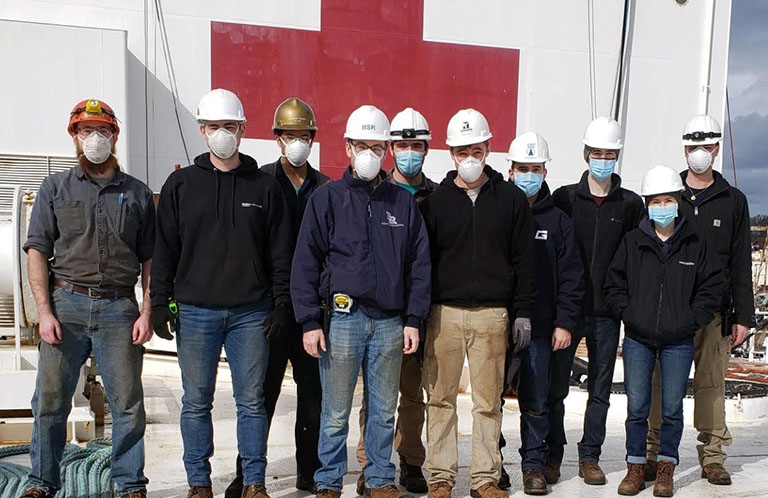
At this point, I’m hoping I’ve convinced you just how much effort went into this endeavor, but just in case you don’t believe me, I have some numbers to help make my case (in true engineer fashion). The first number is time spent. All in, the BSR team spent a combined 176 working days aboard the Mercy, which works out to more than two weeks per person. In that time, the team surveyed 842 different spaces aboard the ship. We documented everything from toilet paper to CPR dummies to spare electric motors. If it was aboard the ship we surveyed it, and in some cases, we even surveyed things that weren’t on the ship. When all was said and done, the BSR Team had surveyed 2,020,480 lbs. of weight aboard the Mercy. For comparison, that’s approximately the weight of five Boeing 747 airliners. Suffice to say that all of us were pretty exhausted by the time we got back to the hotel each evening!
Then there’s the inclining. We had to coordinate with the ship and shipyard to have huge steel weights brought aboard, have tugs available to maneuver the ship away from the pier, cranes to move the weights during the test, and a small boat in the water alongside to take draft readings. Data collection stations had to be set up. And we had to have mother nature give us a calm weather day. Somehow, after months of planning, the test was successfully completed.
But, in true Webb fashion, we made sure we weren’t too tired to have one or two socially-distanced social gatherings while we were there as well. Despite having a team that spanned almost a 10-year range in graduating classes, there’s something about the Webb family that binds us and made the experience feel like we’d all known each other for years. I’m sure I speak for the entire team when I say that it was an experience we won’t soon forget!
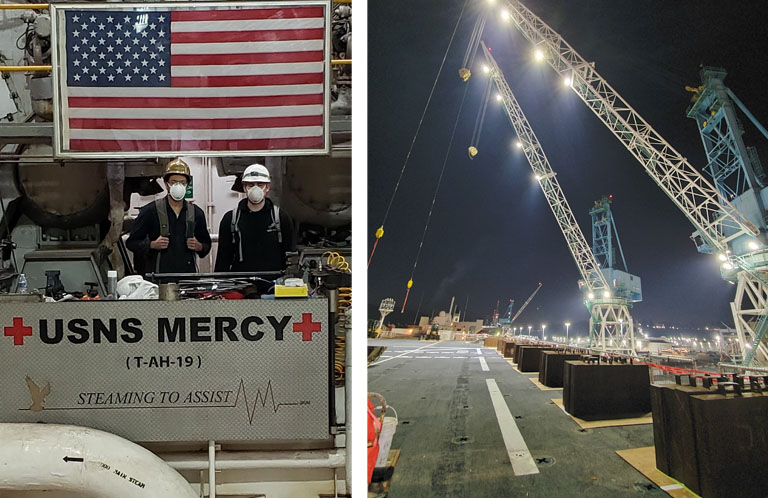
This article is also available on Webb News.
The Brocket Arms Pub Gets a Facelift
by Gailmarie Sujecki (Hon.)
How the Pub Came to Be
Through the academic year of 1971-72, Charlie Finegan (then Plant Superintendent) and his crew were busy building a new student pub in the basement of Stevenson Taylor Hall. With the completion of the new J. J. Henry Auditorium in the spring of 1971, the lecture hall located in the area that had formerly been a bowling alley was no longer necessary. As soon as it had become apparent that this area would be available, Admiral Brockett, responding to requests he had received from several students, had plans drawn up for the installation of an English-style student pub in the space.
Originally the pub was planned as a Parents’ Fund project. A watercolor rendering was prepared and displayed during Parents’ Day and Alumni Homecoming. It was at the Alumni Homecoming that Mr. Leslie Durant ’39 saw the rendering. He and his wife suggested that they would like to help with making the pub a reality. Not having heard anything, Admiral Brockett called Mr. Durant who in turn told him, “We’ve got them started at the joinery in England, send them some dimensions.” Brockett was delighted, however, when Leslie Durant looked at the plans and offered on the spot to pay the full cost, which meant that construction would start immediately. Mr. Durant agreed to the donation with one condition – that the name would remain the same: The Brocket Arms Pub. Admiral Brockett, a man with a sense of humor agreed.
Les Durant modeled our Pub after the Brocket Arms Pub in the UK. The British firm supplied all the lumber already cut to size and ready to assemble. The entire pre-fab pub arrived in the fall of 1971, all in a single forty-foot box weighing several tons. The box was unloaded and work began. By the end of the spring 1972 semester, the pub was nearly finished, though it was not ready for operation until the following fall.
Mr. Durant had furniture sent from Peru, and the old Webb pool table was rebuilt. When it was decided that the furniture was not appropriate for the English pub setting, Mr. Durant sent a check for new furniture. The old furniture found its way into the upper classrooms. Also sent were various befitting antique decorations. But something was still missing in the eyes of the students. Ah yes, a sound system! Mr. Durant once again came through with a substantial donation earmarked for The Brocket Arms Pub sound system.
Modern Day Improvements
During the winter of 2021, Kirk Lehman P’22 spearheaded a renovation of the pub, recognizing how special this space is for the Webb family, especially for current students. In addition to his generous cash gift, Mr. Lehman gifted new oak flooring, moldings, and his time and energy spent staining the moldings, arranging for the purchase and installation of a new pool table. To help underwrite the cost of the renovations, Webb trustees, alumni, and past parents joined Mr. Lehman by making generous contributions to complete the project. We want to give special thanks to Richard Celotto ’73, Nolan Conway ’15, Hampton Dixon ’11, Katherine Dixon P’11, Jay Edgar ’87, John Hootman ’01, Andrew Ko ’16, Jon LaBerge ’76, John Malone ’71, Mark Martecchini ’79, Keith Michel ’73, Gene Miller ’96, and Wombi Rose ’09 for their generosity!
Reference Material: The Centennial History of Webb Institute; Fall 1973 Binnacle, and Professor Emeritus, Rick Neilson ’70.
Article as seen in Webb News 2021.

